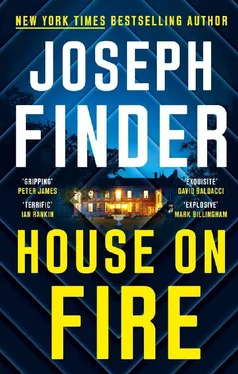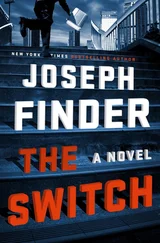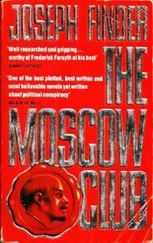Mine was a blue-painted guest room with a four-poster bed. On the wall, an antique tapestry. A dresser with folded towels on top.
The next part was hard: waiting until the house was asleep, which I’d worked out with Sukie would be by around two o’clock in the morning. I was too tense to nap. I was as tight as a bowstring. So I lay on the bed and read my email on my phone, then read the news, and thought. I kept checking my watch. The minutes crept by. I thought about Maggie.
I heard nothing from any of the adjoining rooms. Attribute that to top-notch work by artisan stonemasons imported from Italy and their early-twentieth-century craftsmanship. When labor was cheap, and good stone and fine wood were plentiful.
Then I retrieved my tools from the pockets of my suit and placed them in my leather dopp kit, my shaving kit. I changed into sweats and a T-shirt. Lay back down on the bed and waited.
Finally, it was two in the morning.
I stood up, grabbed my shaving kit, and quietly went out into the hall, passing Conrad’s bedroom suite as if in search of the hall bathroom. The floor, fortunately, was covered in a long oriental runner that must have been custom woven for the original owner a century ago. It also muffled my footfalls, which was great. I was barefoot and knew how to move stealthily in a silent house, but creaky old wooden floors were often a problem in grand houses. The house where I spent my childhood had creaky floors.
The hallway was dark. But I had studied the blueprints, and I knew where I was going.
Conrad Kimball’s study was on the first floor in the other wing of the house. I reached the stone staircase I’d climbed a few hours before. A skylight filtered faint moonlight. I descended the carpeted stairs.
Were there servants around and awake? Maybe, but if so, they were unlikely to question a houseguest, even one roaming the house at two in the morning.
I walked on, my bare feet touching the cold stone of the tiled foyer. The old man’s study was around the corner, the first door on the left, off a small alcove. Across the hall was a swinging door that led into the kitchen. I knew this from the blueprints.
The study door was closed. It was a heavy, medieval-looking door made out of carved wood, of the sort you might see in Game of Thrones . But mounted on the right side of the door was a modern contraption, a small steel number pad with a bright red pinpoint LED light.
Which meant, of course, that the office was alarmed. That I hadn’t expected. Not when his family was in residence.
Shit.
That wasn’t the end of the road, though. I took note of the alarm manufacturer, conveniently right there on the control pad. It was a newly installed system, and it was wireless. There were ways to defeat — jam — wireless systems. I’d be better prepared the next time I visited.
So there would have to be a next time.
Conrad Kimball was an extremely suspicious man. That wasn’t surprising after all. Kimball Pharma was a company under fire these days, and so was the Kimball family.
I turned to go. And then I heard footsteps, someone advancing along the hall very quietly. Very slowly.
Someone was coming around the corner. I immediately backed up against the doorway, flattening myself so I was momentarily out of his line of sight. For a few seconds.
A whisper: “Heller? What the hell?”
Maggie. In jeans and a white T-shirt and white sneakers. She still had her coppery wig on. At least I assumed it was a wig. A big purse was slung over her shoulder.
“Mags? I was going to ask you the same thing.”
She moved in close, and then she kissed me, to my surprise. Then backed up a few inches. “I got dibs, Heller,” she whispered.
“On what?”
“On the files is what, and you know it.”
I nodded. “The alarm is on.”
“What’d you expect? You have any idea how paranoid the man is? A couple of months ago, he brought in some high-end security contractors to protect his home files. Now he always sets the alarm. Lets his housekeeping staff in to clean but only when he’s there. He’s protecting something.”
“Probably all his company’s dirty secrets. Do you have the alarm code?”
“He doesn’t trust his own kids, Heller. No, I don’t. But I don’t think I’m going to need it. Not as long as I have this.” She pulled out a handheld device with four antennas on it like teeth of a comb.
“Wi-Fi jammer?”
She smiled. This little gimmick blocked the signal between the control panel and the alarm sensors, temporarily disabling the alarm. I saw the red LED light go dark. She leaned forward and inserted a key in the lock. She turned the key, then pulled open the door. No alarm sounded, no noise.
It was pitch-black inside.
“We have two hours,” she said.
“How do you know that?”
“If the sensor doesn’t receive a signal in a hundred twenty minutes, the alarm goes off. It’s a countermeasure.”
“Anything else to worry about inside? Motion sensor?”
“Not in his home office.”
“Pressure pads?”
“Highly doubt it.”
She followed close behind me as I entered, then closed the door after us. She stood her Wi-Fi jammer on the floor right next to the door.
I exhaled. I could hear her breathe too, could smell her perfume. Something different from what she used to use. Brassier. A perfume called Opium, I decided. Part of her disguise. In the old days she wore patchouli. I closed my eyes and opened them again, letting my eyes get used to the dark. It wasn’t pitch-black after all. Faint mottled moonlight came in through the leaded-glass diamond-pane windows.
“What are you after?” I asked.
“The files.”
“Which ones?”
She paused. “Not gonna say.”
“Who hired you?”
“Can’t say. You?”
“Same. Where’d you get the key?”
She shrugged. “Can’t say.”
“You have any idea where the files are?”
“Not exactly. Could be anywhere. But I’m interested in the fact that he had a safe room put in a few months back. With a concealed entrance.”
“For the files, you think?”
“Dunno. Maybe it’s only for Natalya’s jewelry. So I plan to search the whole office.” She pulled out a tiny LED flashlight and swept it back and forth across the room. I could make out some shadowy details, including a large, ornately carved desk. Books lined the walls. A Chesterfield-style leather sofa, with matching hulking leather Chesterfield chairs facing it on the other side of a coffee table.
Nothing that looked like a filing cabinet.
I glanced back at the desk drawers. Possible. I took out my own little Maglite and approached the desk, tugging at the top right drawer. It slid open. No lock.
I smelled lemon-oil furniture polish and cigars. I focused the light. A Scotch-tape dispenser, a checkbook, a couple of pens and sharpened pencils, a pair of scissors.
The next drawer down was taller and more likely to contain files. That one came right open as well, revealing a stack of individually wrapped reams of computer paper. Nothing else. Conrad Kimball’s files weren’t in his desk.
I turned around to see Maggie, meanwhile, inspecting the bookshelves closely with her flashlight. She’d mentioned a safe room with a concealed entrance. A safe room, also known as a panic room, is a hardened shelter installed in a private residence that can be used by the homeowners to hide in order to stay safe during home invasions. Some of them, like the civil defense shelters of the early sixties, were big enough, with enough supplies, to live in for a few weeks. It would also make a logical place to hide something valuable.
Читать дальше












